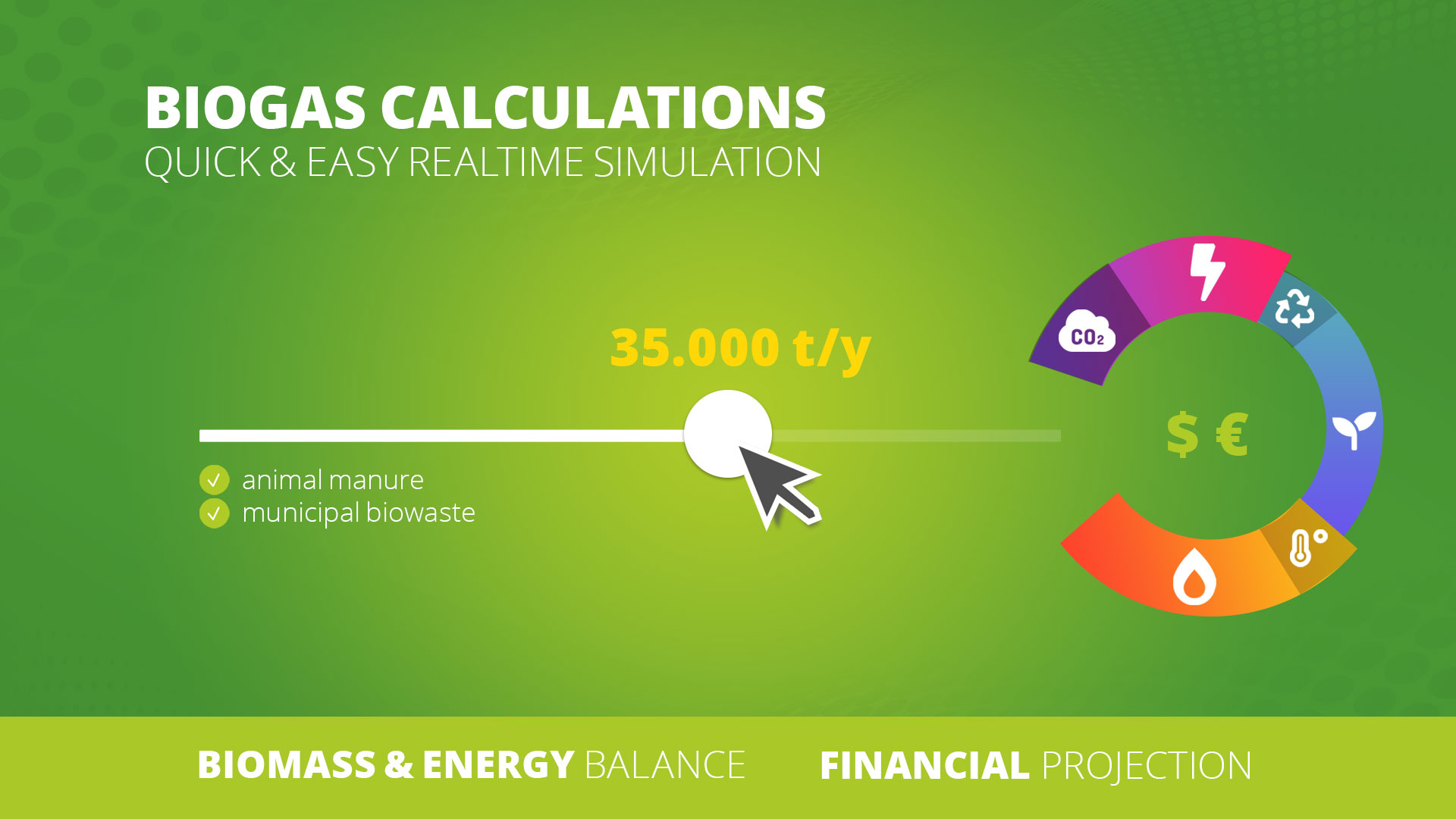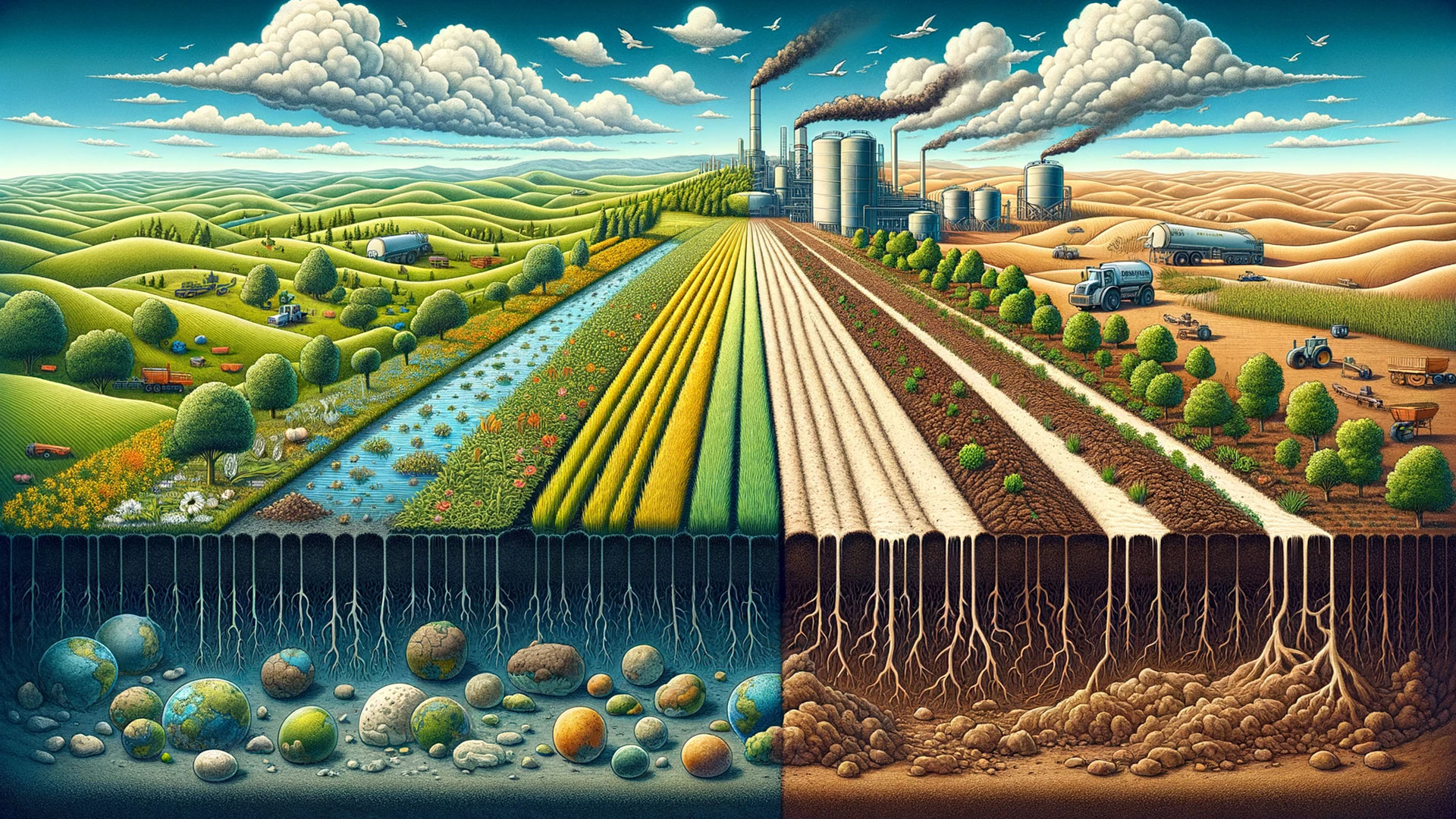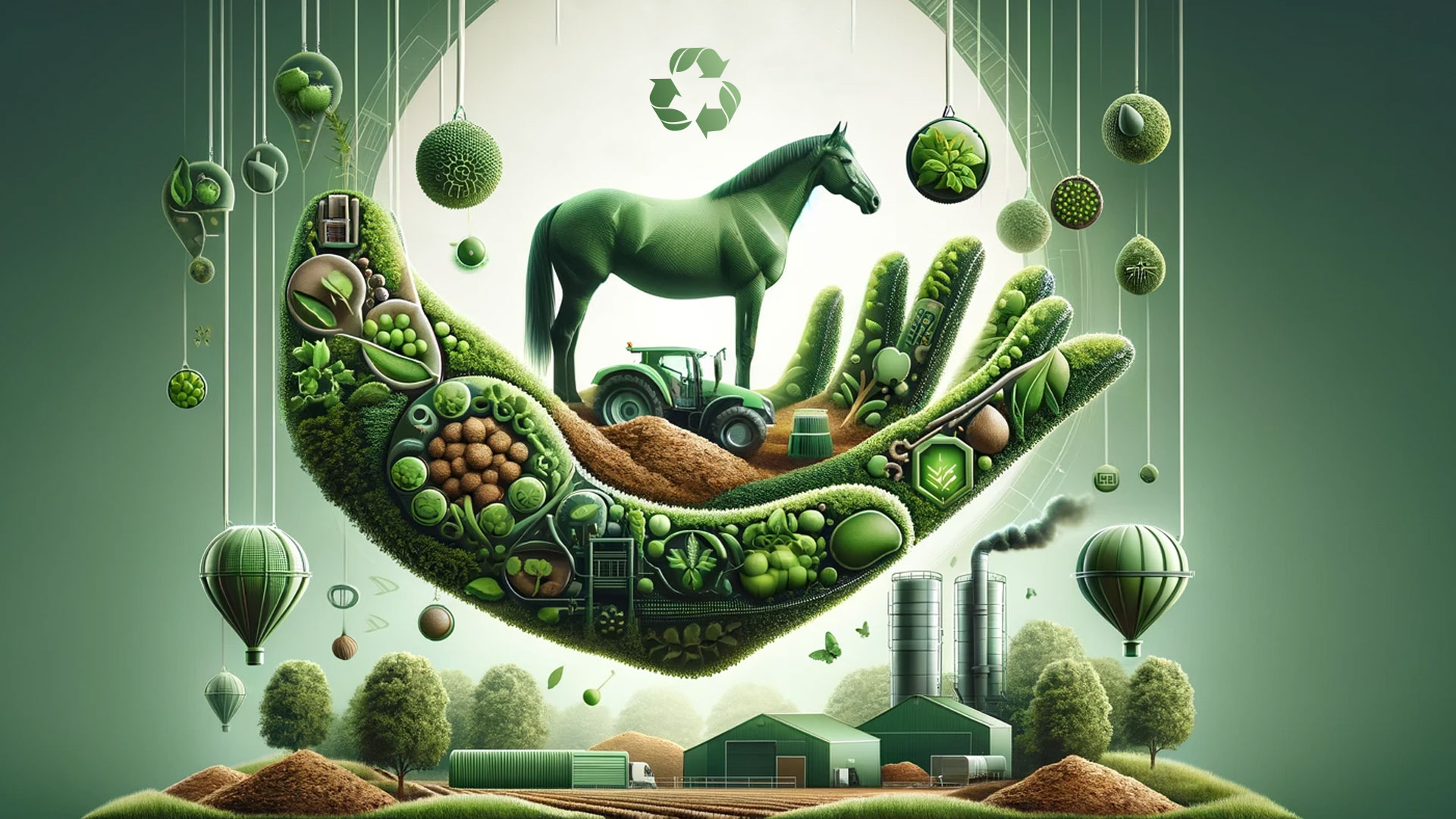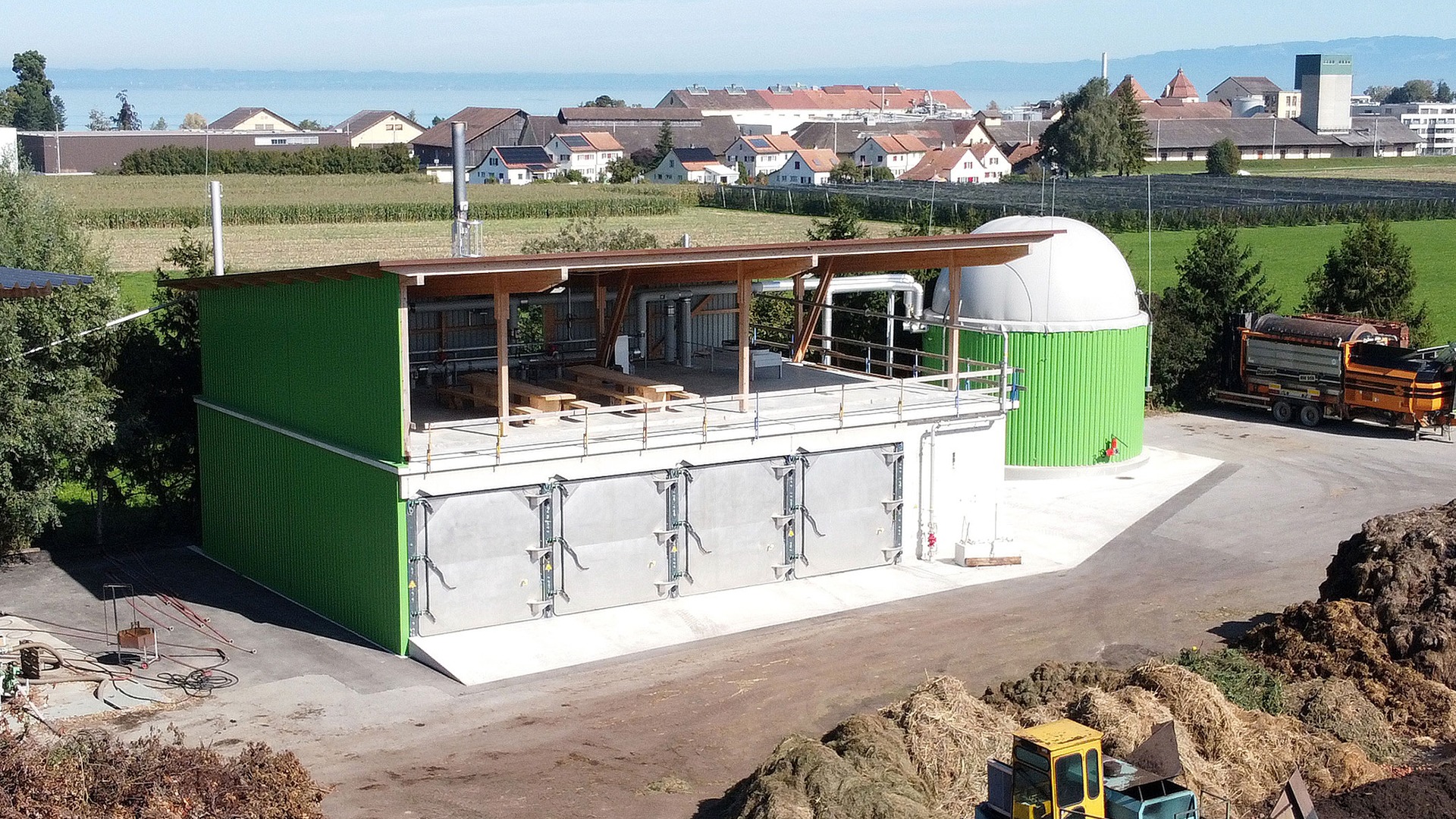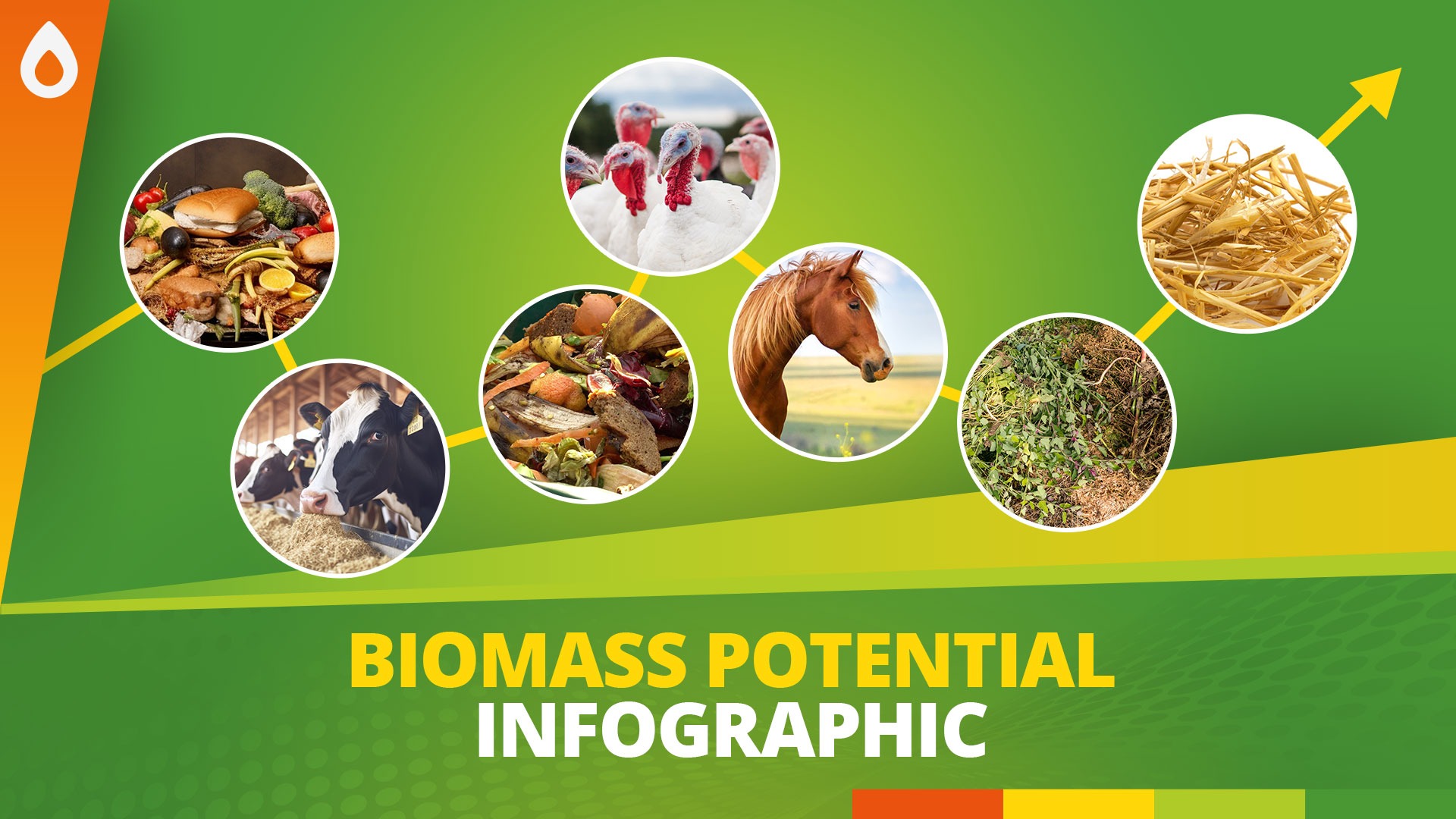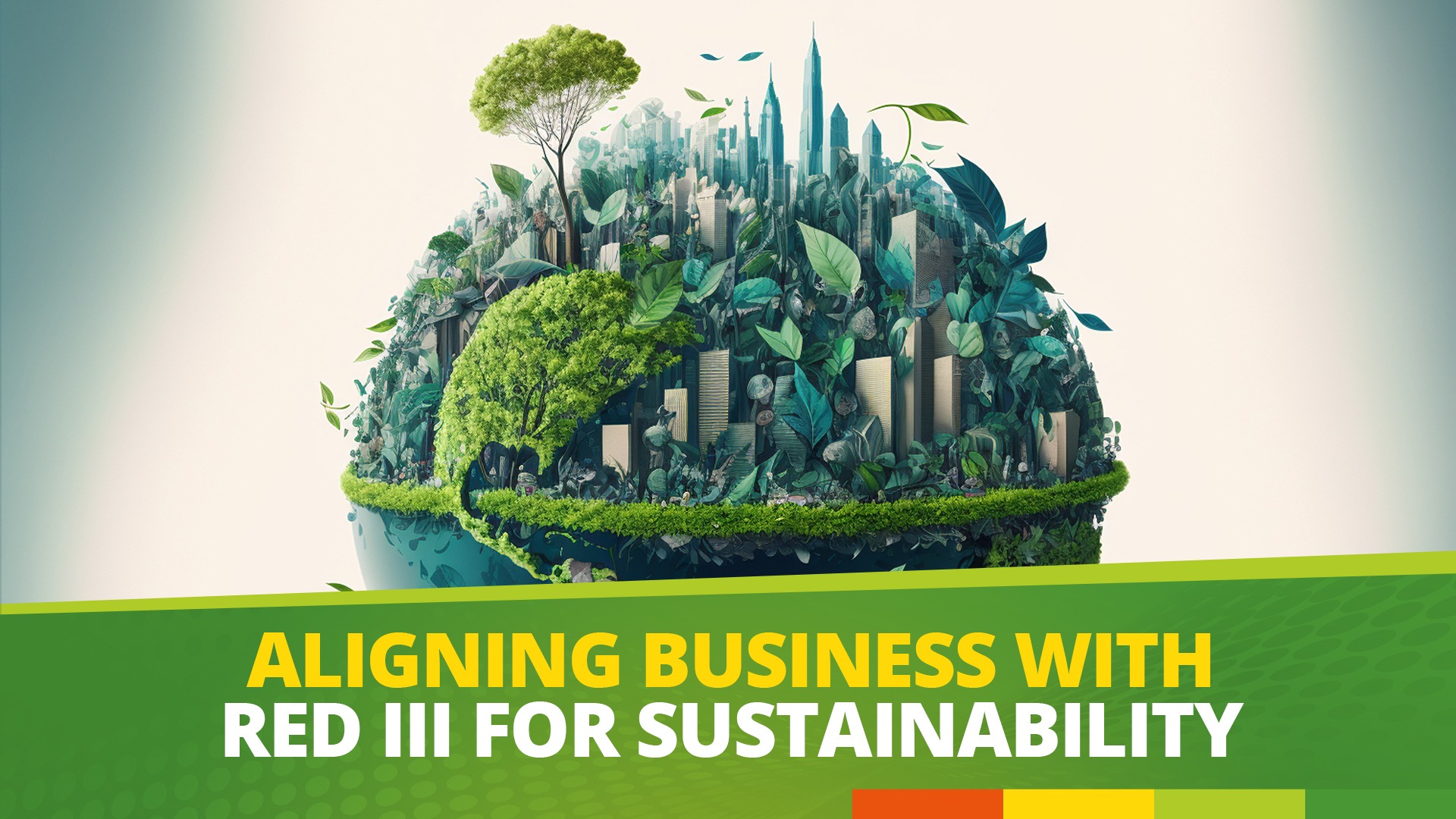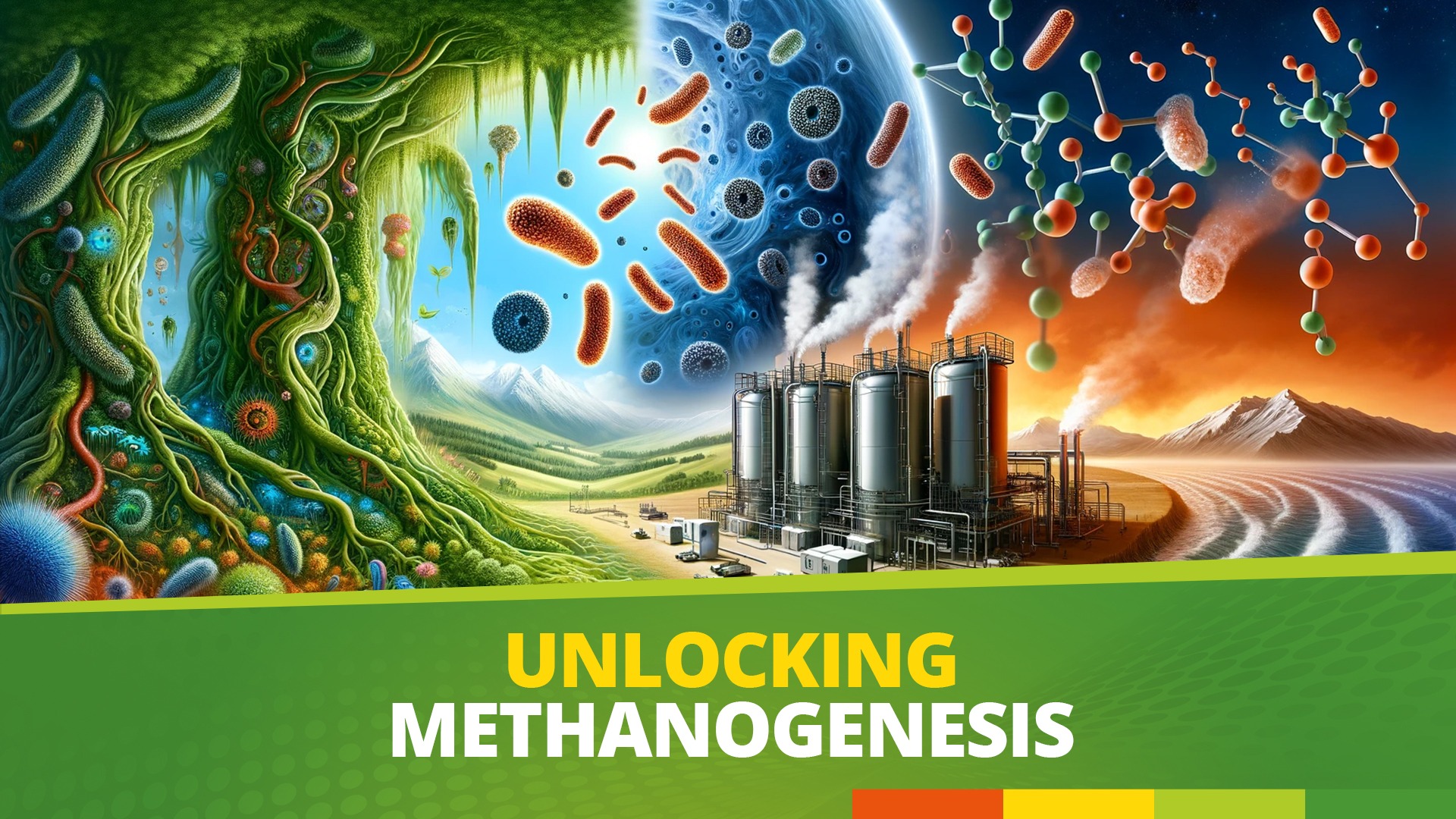With our free biogas-calculator we would like to give you a first aid to energy potentials and possible proceeds. The calculator is a pre-planning tool that helps you to estimate the key figures of a biogas plant, such as gas, electricity and heat output on the basis of the input substrates.
AD digestion plants for dry/solid-state fermentation (stackable biomass, green waste, solid manure) stand for great potential of renewable energy and are increasingly becoming the focus of attention of numerous farmers, waste management companies and composting companies. But for whom and under which conditions is a biogas plant interesting and when does the construction and operation of a biogas plant pay off?
We would be pleased to help you in a personal conversation. Please contact us or we will call you back:
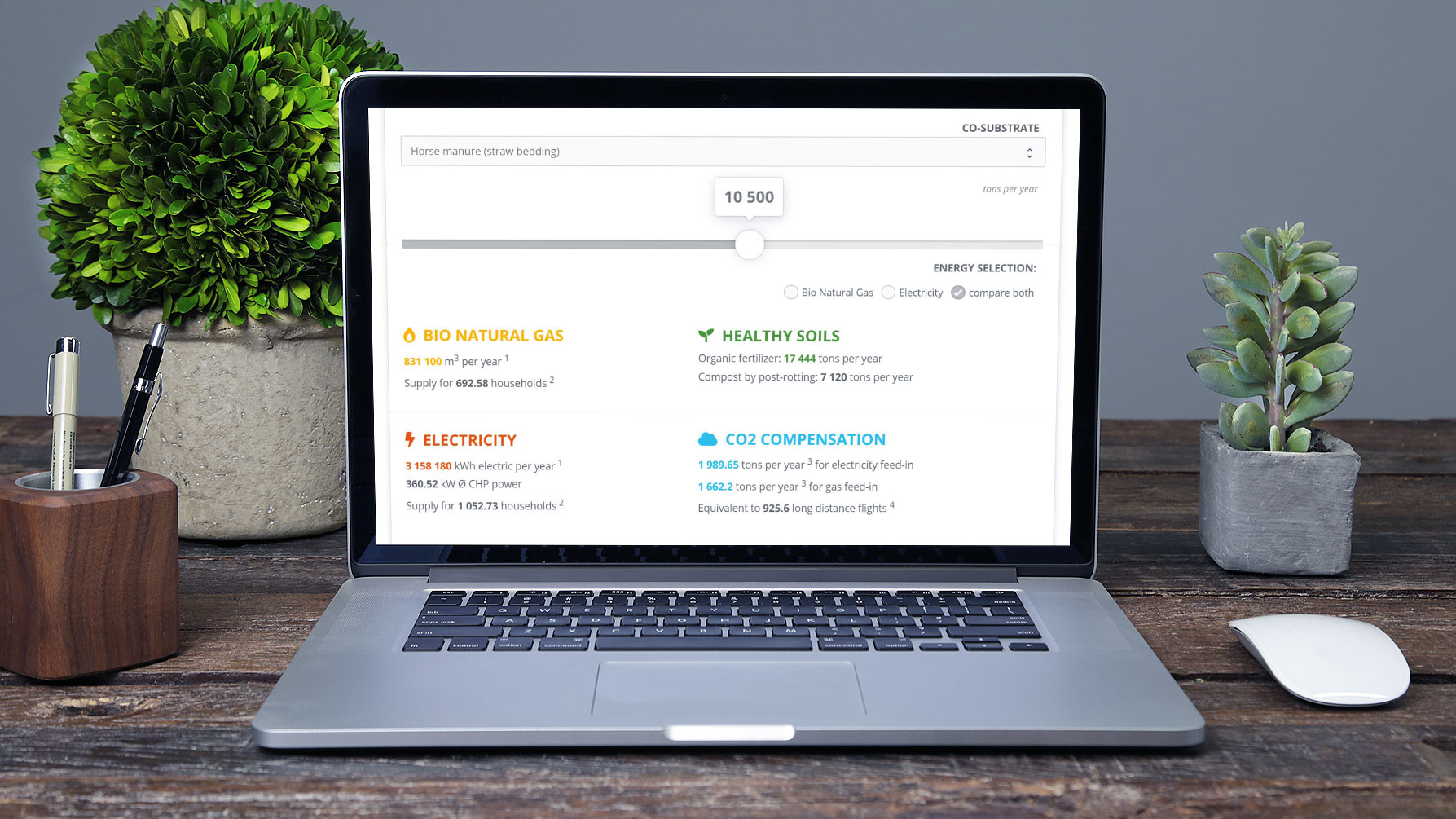
Biogas Calculator based on RSD Technology
The Renergon process is the anaerobic degradation of organic matter for biogas production by percolation. The organic matter is mainly solid, rich in structure, and stackable. This process is called Solid-State Fermentation – other terms can be: Dry Fermentation, High Solids Anaerobic Digestion (HSAD) or Solid-State-Anaerobic Digestion (SSAD). The solid-state fermentation plant consists of gas-tight fermenter boxes with gas-tight doors working in batch mode operation filled and emptied time-delayed to the previous by wheel loaders.
Dry Anaerobic Digestion has proven to be the optimal technology for the utilization of these organic residues and wastes, which are predominantly available worldwide in a solid and stable form. This is regarded as the new generation of biogas technology.
- Substrate flexible
- Designed for biomass with high solid and dry content
- Absolutely insensitive to impurities and contaminants (e.g. plastic, metal, stones)
- Robust, innovative technology with low maintenance and downtimes
Advantages compared to the wet digestion systems include:
- Low labor and operating costs
- No, or little mechanical pre-treatment of the biomass is necessary
- Low maintenance and wear and tear on plant components
- Low water consumption and therefore suitable for dry, arid regions around the world
The cycle closes when the organic residue, the digestate, is returned to the soil with the nutrients it contains as a potent fertilizer with high humus content after fermentation. In addition to the fertilizing effect of nutrients available to plants, the practical application shows an improvement in soil structure, including a steady increase in the proportion of hummus on arable land. This humus structure drastically improves the water storage capacity of the soil. Therefore, more than 70% of crop failures are avoidable in dry periods.
Particularly in very dry regions of the world, some with water shortages, this fermenting material provides a basis to transform parched, desert-like areas back into the green and fertile growing areas and to counteract further desertification. Our RSD technology for local added value and sustainability contributes to a global climate concept.
